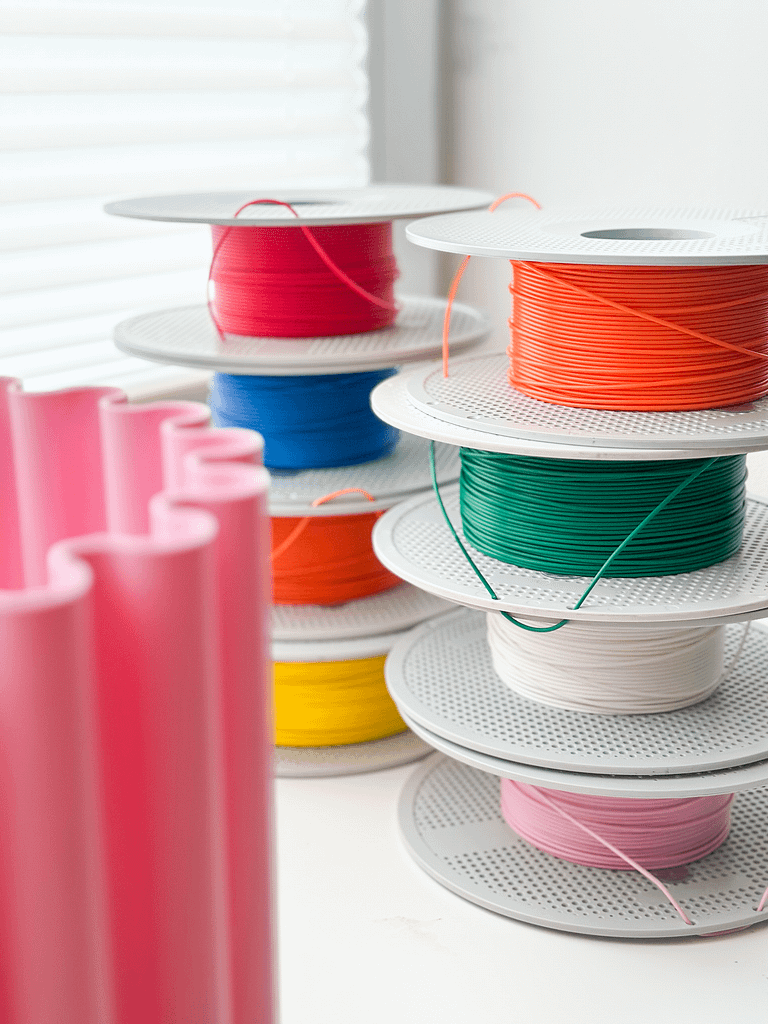
Polylactic acid, commonly known as PLA, is a bioplastic that has gained popularity due to its environmentally friendly properties and wide range of applications, particularly in the field of 3D printing.
It is derived from renewable plant-based resources such as cornstarch, sugarcane, or other starch-rich crops. The production process involves several stages, beginning with the conversion of starch into glucose, which is then fermented to produce lactic acid. The lactic acid is subsequently polymerized to form polylactic acid (PLA) molecules. This biological production method makes the material one of the most environmentally friendly plastics available, as it is made from renewable resources and is biodegradable.
Unlike traditional plastics such as PET or PVC, PLA is biodegradable under specific conditions. It is industrially compostable, meaning it will break down in environments where temperatures exceed 58°C and where there is active microbial activity. However, it typically does not degrade in home composting systems because the required temperatures are not reached.
If composting or recycling is not feasible, PLA products should be sent to landfills. Unlike conventional plastics like PET or PVC, PLA does not release significant toxic compounds in landfills, but decomposing can take some time.
The material is sensitive to high temperatures. It is especially important to consider this when the product is exposed to direct sunlight or hot objects. Items can deform or soften at temperatures above 60°C.
Although PLA generally has good UV resistance, prolonged exposure to sunlight can weaken the material and cause colors to fade. Therefore, it is recommended to keep PLA products out of direct sunlight for extended periods.
Thanks to its properties, PLA is widely used in various fields:
PLA has become one of the most commonly used materials in 3D printing due to its versatile properties:
The use of PLA in 3D printing and other industries is a prime example of how sustainable materials can replace traditional plastics, contributing to a more environmentally responsible future.